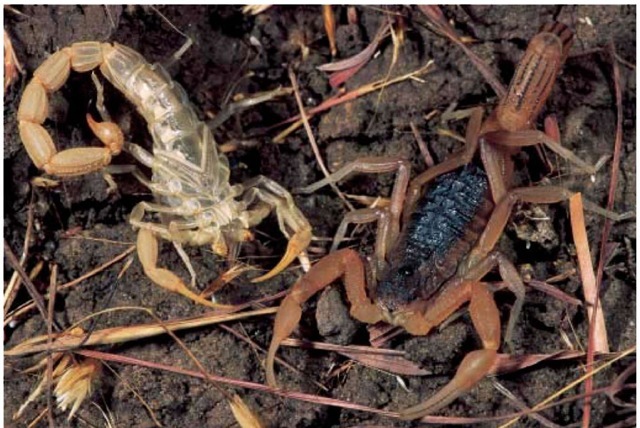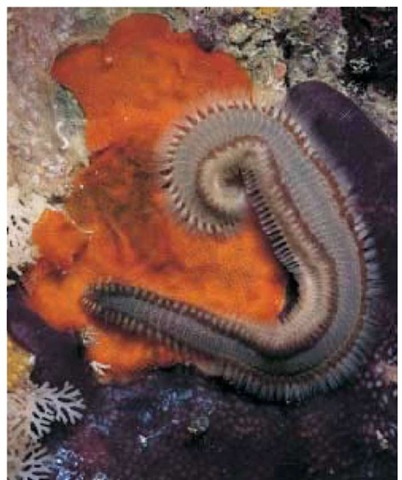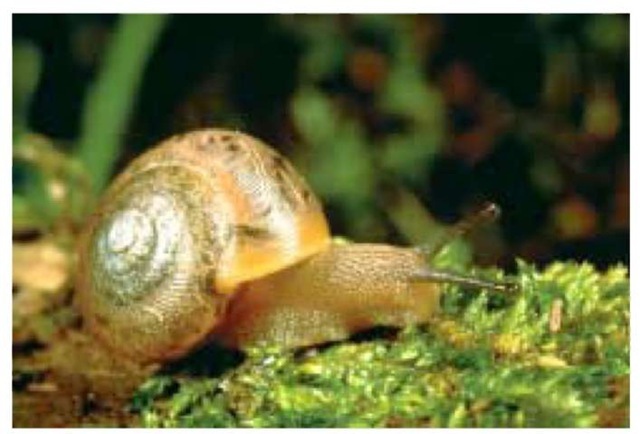Origin of Protostomia
The term Protostomia (from the Greek “proto,” meaning first, and “stoma,” meaning mouth) was coined by the biologist Karl Grobben in 1908. It distinguishes a group of invertebrate animals based upon the fate of the blastopore (the first opening of the early digestive tract) during embryonic development. Animals in which the blastopore becomes the mouth are called protostomes; those in which the mouth develops after the anus are called deuterostomes (from the Greek “deutero,” meaning second, and “stoma,” meaning mouth).
Protostomia and Deuterostomia are considered super-phyletic taxa, each containing a variety of animal phyla. Traditionally, the protostomes include the Annelida, Arthropoda, and Mollusca, and the deuterostomes comprise the Echino-dermata and Chordata. Grobben was not the first biologist to recognize the distinction between these two groups, but he was the first to place importance on the fate of the blastopore as a major distinguishing criterion. Historically, the two groups are distinguished by the following criteria:
1. Embryonic cleavage pattern (that is, how the zy-gote divides to become a multicellular animal)
2. Fate of the blastopore
3. Origin of mesoderm (the “middle” embryonic tissue layer between ectoderm and endoderm that forms various structures such as muscles and skeleton)
4. Method of coelom formation
5. Type of larva
These developmental features are different in the two groups and can be summarized as follows:
Developmental features of protostomes
1. Cleavage pattern: spiral cleavage
2. Fate of blastopore: becomes the mouth
3. Origin of mesoderm arises from mesentoblast
(4d cells)
4. Coelom formation: schizocoely
5. Larval type: trochophore larva
Developmental features of deuterostomes
1. Cleavage pattern: radial cleavage
2. Fate of blastopore: becomes the anus
3. Origin of mesoderm: pouches off gut (endoderm)
4. Coelom formation: enterocoely
5. Larval type: dipleurula
Cleavage pattern refers to the process of cell division from one fertilized cell, the zygote, into hundreds of cells, the embryo. In protostomes, the developing zygote undergoes spiral cleavage, a process in which the cells divide at a 45° angle to one another due to a realignment of the mitotic spindle. The realignment of the mitotic spindle causes each cell to divide unequally, resulting in a spiral displacement of small cells, the micromeres, that come to sit atop the border between larger cells, the macromeres. Another superphyletic term used to describe animals with spiral cleavage is Spiralia. Spiral cleavage is also called determinate cleavage, because the function of the cells is determined early in the cleavage process. The removal of any cell from the developing embryo will result in abnormal development, and individually removed cells will not develop into complete larvae.
In deuterostomes, the zygote undergoes radial cleavage, a process in which the cells divide at right angles to one another. Radial cleavage is also known as indeterminate cleavage, because the fate of the cells is not fixed early in development. The removal of a single cell from a developing embryo will not cause abnormal development, and individually removed cells can develop into complete larvae, producing identical twins, triplets, and so forth.
The fate of the blastopore has classically been used as the defining characteristic of protostomes and deuterostomes. In protostomes, the blastopore develops into the mouth, and the anus develops from an opening later in development. In deuterostomes, the blastopore develops into the anus, and the mouth develops secondarily.
Mesoderm and coelom formation are intimately tied together during development. In protostomes, the mesoderm originates from a pair of cells called mesentoblasts (also called

Protostomes have exoskeletons. When they grow, they shed their outer layer.
4d cells) next to the blastopore, which then migrate into the blastocoel, the internal cavity of the embryo, to become various internal structures. In coelomates, the mesentoblasts hollow out to become coeloms, cavities lined by a contractile peritoneum, the myoepithelium. In protostomes, the process of coelom formation is called schizocoely. In deuterostomes, the mesoderm originates from the wall of the archenteron, an early digestive tract formed from endoderm. The archenteron pouches out to form coelomic cavities, in a process called en-terocoely.
Protostomia and Deuterostomia are also characterized by different larvae. In most protostomes, the larval type is a tro-chophore, basically defined by the presence of two rings of multiciliated cells (prototroch and metatroch) surrounding a ciliated zone around the mouth. Most deuterostomes have a dipleurula-type larva, defined by the presence of a field of cilia (monociliated cells) surrounding the mouth.
Contemporary reexamination of Protostomia
For more than a century, biologists have divided the bilateral animals into two main lineages (the diphyletic origin of Bilateria), the most well known of which is the Protostomia/Deuterostomia split. Similar divisions include the Zygoneura/Ambulacralia-Chordonia split proposed by the German invertebrate embryologist Hatschek in 1888, the Hyponeuralia/Epineuralia split proposed by the French zoologist Cuenot in 1940, and a Gastroneuralia/Notoneuralia split proposed by the German zoologist Ulrich in 1951, among others. These divisions often emphasized different developmental and adult features, thereby leading to different names and hypotheses about animal relationships. Although none of these groups have been granted formal taxonomic rank (for example, as a subkingdom or superphylum) by the International Code of Zoological Nomenclature, the names nevertheless remain active in the literature.
Contemporary research on protostome relationships utilizes a host of methods and technologies that were unavailable to biologists in the early twentieth century, such as Grobben. Modern biologists employ electron microscopy, fluorescent microscopy, biochemistry, and a collection of molecular techniques to sequence the genome, trace embryonic development, and gain insight into the origin of various genes and gene clusters, such as Hox genes. Other fields of research, including cladistic analysis and bioinformatics, continue to make important contributions. The latter fields are computer-based technologies that employ algorithms and sta-

A fire worm (Eurythoe complanata) with vemonous bristles.
tistics to handle and analyze large data sets, such as lists of morphological characters and nucleotide sequences. Together with new paleontological discoveries in the fossil realm, these novel techniques and technologies provide modern biologists with a useful way to reexamine the traditional protostome relationships and to develop new hypotheses on animal relationships and evolution.
With the arrival of new information and a more encompassing examination of all the animal phyla, the modern view of Protostomia has broadened from that originally proposed by Grobben, which, at one time or another, included the following phyla: Brachiopoda, Chaetognatha, Cycliophora, Ecto-procta, Entoprocta, Echiura, Gastrotricha, Gnathostomulida, Kinorhyncha, Loricifera, Nemertinea, Nematoda, Nemato-morpha, Onychophora, Phoronida, Platyhelminthes, Priapul-ida, Rotifera, Sipuncula, and Tardigrada. Many of these phyla contain species that display one or more developmental characters outlined by Grobben; however, it is rare to find more than a handful of species from any phylum that meet all the traditional protostome criteria. Questions have been raised about their relationships, even among “typical” protostomes such as arthropods. For example, the only known arthropods with typical spiral cleavage are the cirripede crustaceans (barnacles such as Balanus balanoides) and some primitive chelicer-ates (such as horseshoe crabs and spiders), and these are but a few compared to the millions of species in the phylum. Moreover, some phyla, such as Ectoprocta, Nematomorpha, and Pri-apulida, share no developmental characters with the typical protostome, and for others, such as Gnathostomulida and Lori-cifera, very little developmental information exists. This has called into question the validity of the Protostomia as a natural, monophyletic group. In fact, whether or not Protostomia is accepted by biologists as monophyletic often depends upon the type of data collected, such as molecular sequences, embryology, and morphology, and how the data are analyzed.
The evolutionary origin of the Protostomia, and of the groups it includes, remains a major challenge to modern biologists. Although proof of the monophyly of the Protosto-mia is elusive, many of the phyla are clearly related, and make up clades that some biologists consider monophyletic. For example, in 1997 Aguinaldo et al. proposed the establishment of two clades within the Protostomia based on molecular sequence data: Ecdysozoa (the molting animals, including the Arthropoda, Nematoda, Priapulida, and Tardigrada), and Lophotrochozoa (the ciliated animals, including the Annelida, Echiura, and Sipuncula). Biologists continue to debate these hypotheses and test them with independent biochemical, developmental, molecular, and morphological data.

A land snail crawling on grass.
